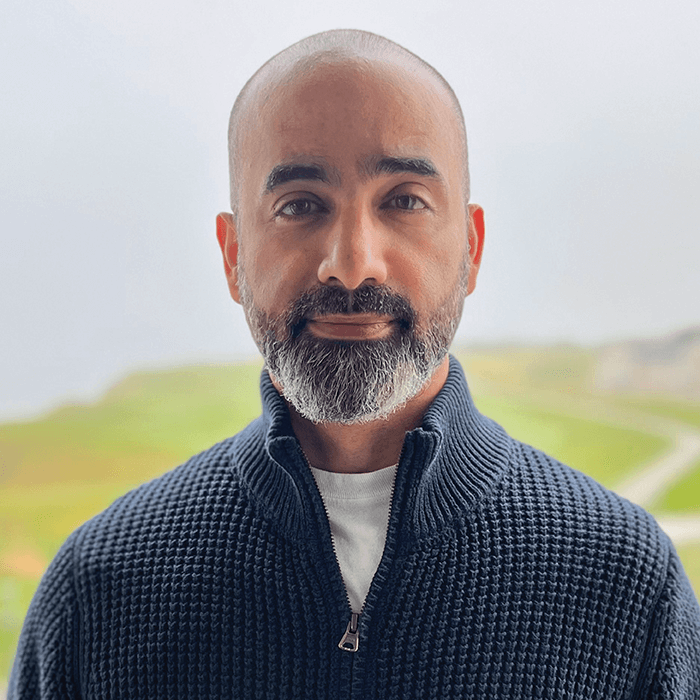
Malik Kahook, The Slater Family Endowed Chair in Ophthalmology, Professor and Chief, Glaucoma Service at the Sue Anschutz-Rodgers Eye Center, The University of Colorado’s Department of Ophthalmology, Aurora, Colorado, US:
Tell us about your first ophthalmic innovation idea and its commercialization process…
My first ideas for ophthalmic innovations came to me during my first week as a trainee at the University of Colorado, when I started examining patients and wondering how we could be more efficient in clinic flow and documentation. However, my excitement and focused attention to new ideas and inventions started in earnest when I entered the OR and did my first cases as a late first-year and into my second year of training. I was fortunate to have great support from my attendings and several of the ideas resulted in patents and one (Verus Capsulorhexis Caliper) was commercialized a few years later.
What has the commercialization process been like for you?
I’ve been lucky to have had a few devices commercialized over the years and many were initially contemplated during my early training and into my first years as an attending at the University of Colorado. The Kahook Dual Blade was the first large-scale commercial product that came out of my lab, developed in partnership with New World Medical. Years of development resulted in a global launch in 2015, and we continue to collaborate and innovate in the space today. It has been a great partnership.
The process of ideation, developing, patenting, testing and retesting, clinical trials, and then commercialization is typically similar across different projects. There is of course some variability depending on the product and specific approach but the steps are usually similar from one project to another. However, the commercialization effort varies considerably. Depending on the product and commercial fit, devices might be launched in only one region or – at times – globally. Reimbursement and competitive landscape enters into the equation and I have learned a great deal from companies – both large and small – about how they consider these different options for launch. This is not something doctors are not typically trained to do. I’ve now expanded my knowledge and expertise to the point where future product launch efforts now enter into my ideation and refinement routine so that commercialization realities are now part of the early invention process.
We’ve heard a lot about your successes, but have you had any failures?
I have had many failures along the way. Some of the devices that I have launched were successful in accomplishing the therapeutic goals but market dynamics resulted in difficult uptake and adoption. This was the case with the Verus Capsulorhexis ring that worked well and gained a significant following, but we lacked the commercial push to train and serve users appropriately. This was a great lesson for me to make sure we had the right partners to launch products once they were ready for wide use. There have been other devices that either did not meet our anticipated benefits or that failed to get needed funding along the way. The innovation process is as much perseverance and patience as it is design and development. Failure is just part of the journey.
What advice would you offer to young ophthalmic innovators?
My number one piece of advice is to seek mentorship from those who have traveled down a road you want to emulate. Having a resource available that can explain how to do things and how to avoid mistakes will cut out years of trial and error and provide guidance that will save both time and money. Networking in your field and reaching out to people who have skill sets different than your own is imperative. Innovation in ophthalmology is still clustered within a small ecosystem. Find ways to become part of that ecosystem and expand your rolodex so that you know who to call and when to call and that people respond when that time comes. What we do is all about human connections.
What projects or innovations are you working on now?
I am mostly focused on products coming out of our incubator, SpyGlass Ophthalmics, with the first product coming from a company called SpyGlass Pharma. SpyGlass is currently in clinical trials with a drug delivery approach that will allow for long-term treatment of glaucoma at a point of care that is different from other devices I have seen over the years. Stay tuned and follow www.spyglasspharma.com for near-term news that I think will be exciting for both surgeons and patients.
Which ophthalmic innovators are the ones to follow?
I’d like to mention a couple of my colleagues who certainly deserve a great deal of attention: Jayashree Kalpathy-Cramer, Chief of the Division of Artificial Medical Intelligence in Ophthalmology at the University of Colorado School of Medicine, who innovates in the AI space. I expect great things from her after joining our department and look forward to seeing how her team can create digital tools to transform our daily practice. Pete Campbell is a very innovative ophthalmologist from the Oregon Health and Science University in Portland, US, who is doing interesting work in AI and diagnostic devices. I’ve enjoyed reading his papers and having discussions with him about both software and hardware approaches that will enhance the ability to screen for disease and ultimately drive decision making in ways we once thought impossible. The field of AI in general is poised to transform our daily lives in clinic and surgery and this could be the topic of a full issue you publish in the future.

